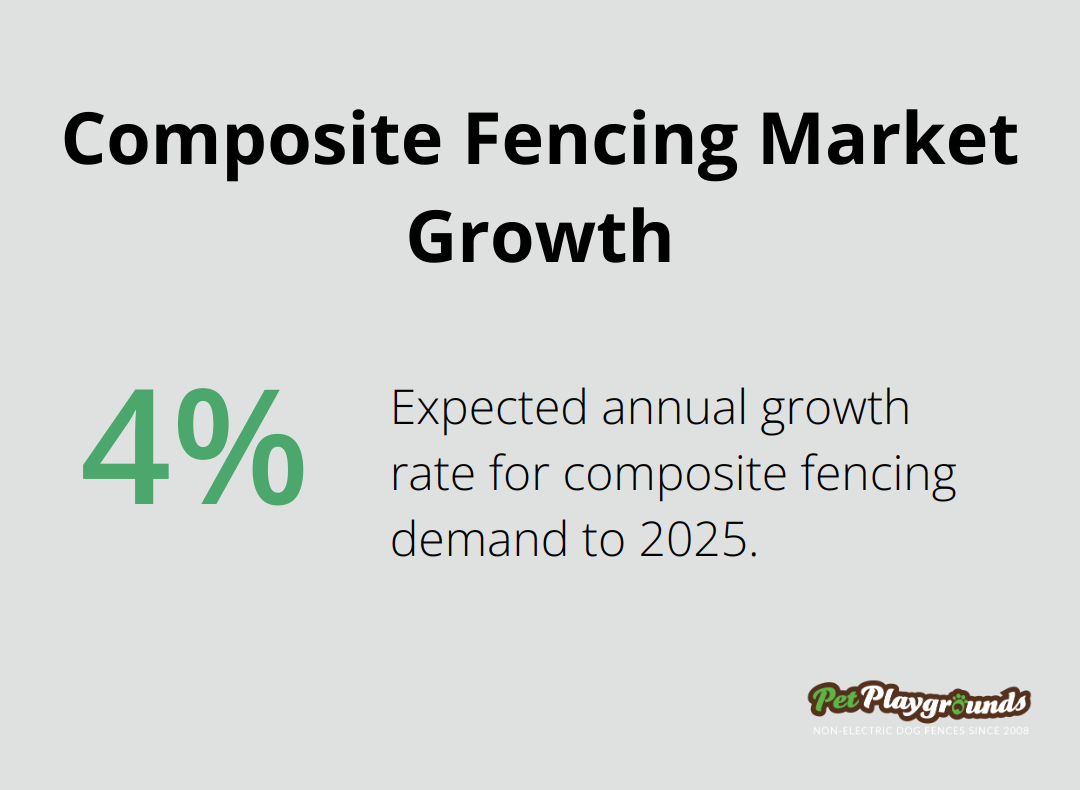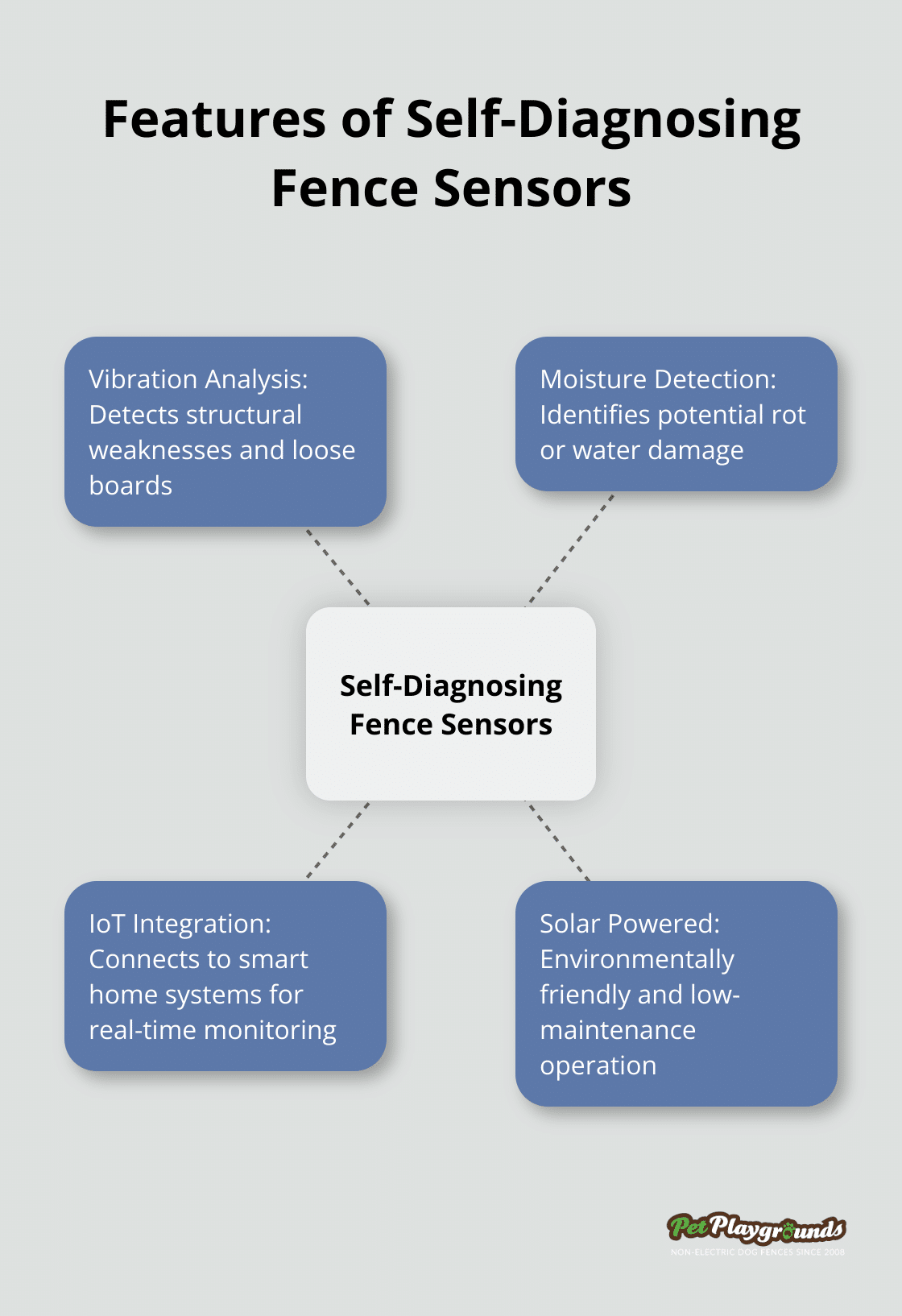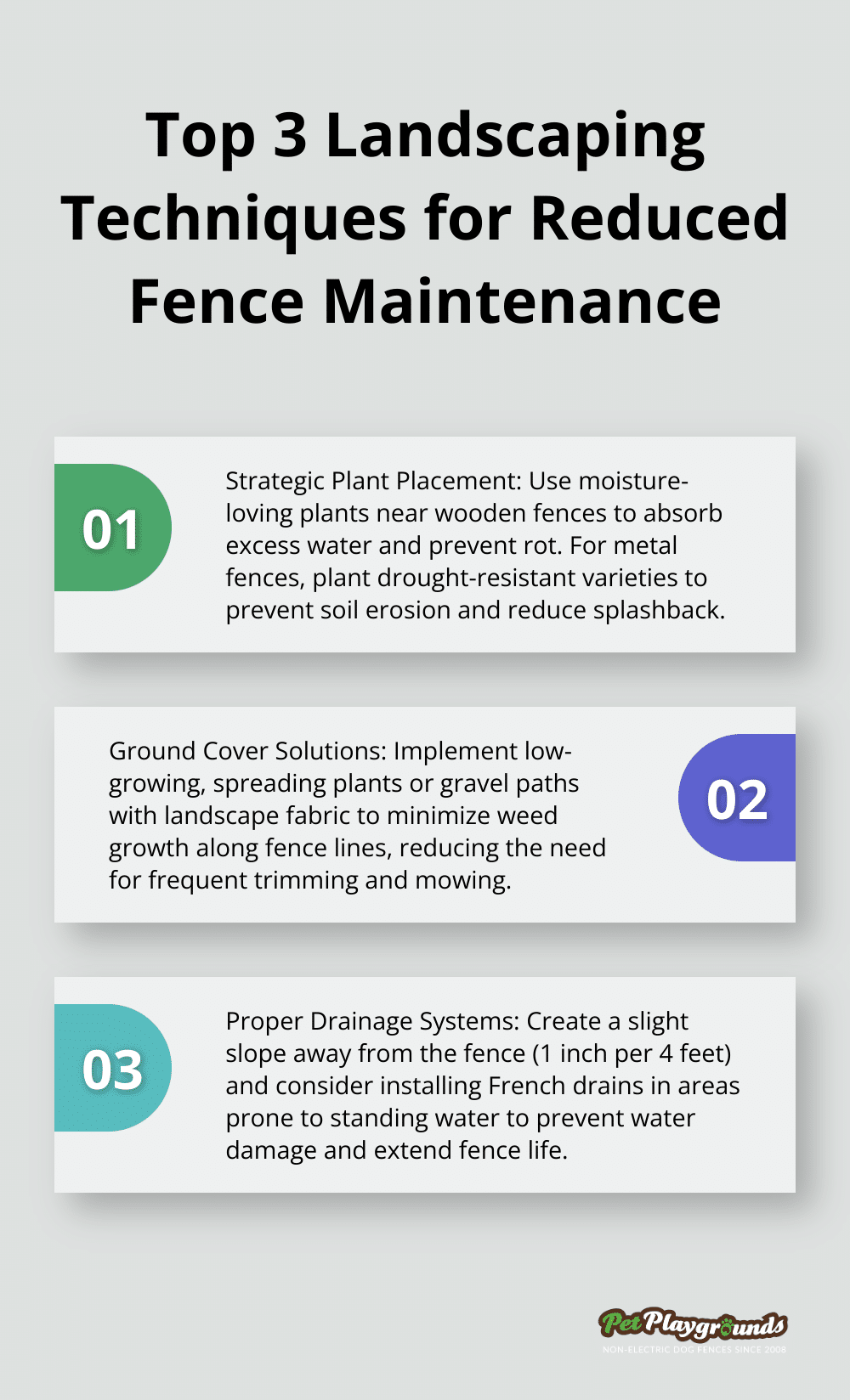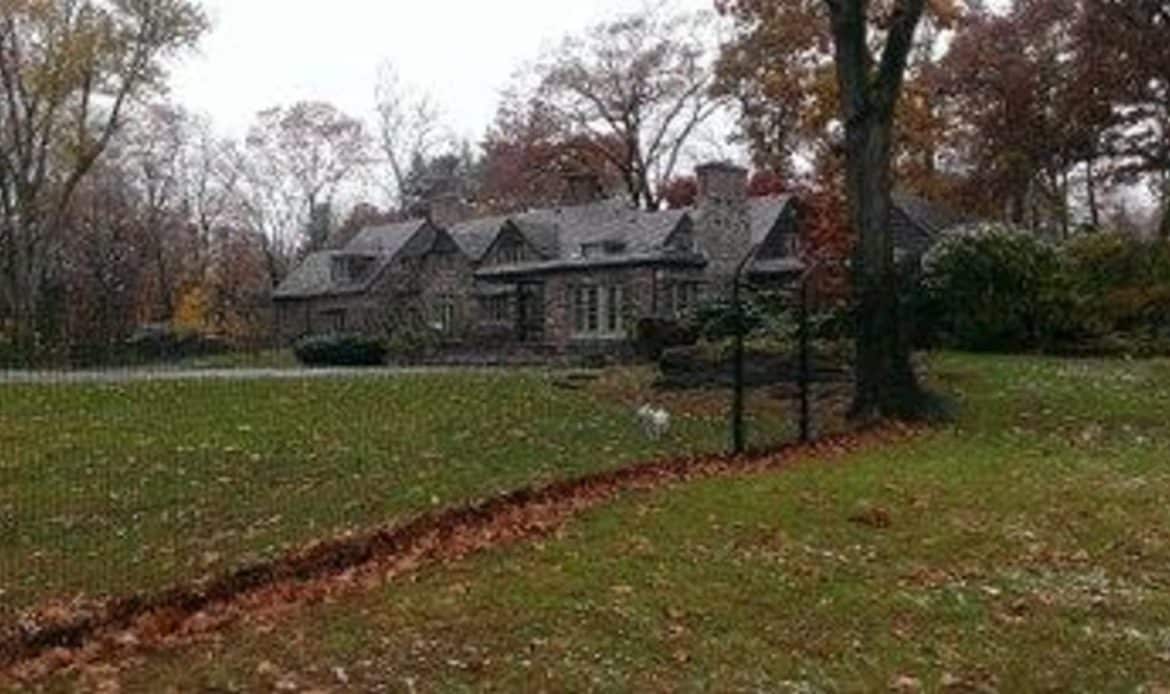At Petplaygrounds Non electric dog fence, we understand the desire for hassle-free outdoor spaces. Fence maintenance can be a time-consuming chore that many homeowners dread.
But what if your fence could take care of itself? In this post, we’ll explore innovative materials, smart technologies, and landscaping techniques that can turn your fence into a self-maintaining dream.
What Are the Best Self-Maintaining Fence Materials?
At Petplaygrounds Non electric dog fence, we prioritize innovative solutions that simplify pet owners’ lives. While our non-electric dog fence system offers unmatched security and easy installation, we recognize that some homeowners might want to explore other low-maintenance fencing options. Let’s examine some of the most popular self-maintaining fence materials available today.
Weather-Resistant Composite Fencing
Composite fencing has surged in popularity due to its durability and minimal maintenance needs. This material combines wood fibers and recycled plastic, resisting rot, decay, and insect damage. Demand for composite fencing is expected to grow by approximately 4.3% per year to 2025, influenced by increased awareness of resource efficiency.

Composite fencing excels in color retention. Unlike wood, which requires regular staining or painting, composite materials maintain their hue for years with minimal fading. This eliminates the need for frequent repainting, saving time and money.
Vinyl Fencing for Enduring Beauty
Vinyl fencing presents another excellent low-maintenance solution. Constructed from PVC (polyvinyl chloride), these fences resist weathering, UV rays, and moisture. According to the Vinyl Institute, vinyl fences can outlast wood fences by up to five times, with an average lifespan of 20-30 years.
Vinyl fencing boasts easy cleaning as a key advantage. A quick spray with a garden hose often suffices to maintain its pristine appearance. For stubborn stains, a simple mixture of mild soap and water will clean without damaging the material.
Aluminum and Powder-Coated Steel Fences
For those who prefer a more classic look, aluminum and powder-coated steel fences offer durability with minimal upkeep. These materials naturally resist rust and corrosion, making them suitable for various climates.
Powder-coated steel fences, in particular, have gained traction. The powder coating process creates a hard finish that outperforms conventional paint, resisting chipping, peeling, and fading. The Powder Coating Institute states that powder-coated finishes can last up to 20 years before requiring touch-ups.
Aluminum fences require even less maintenance, as they don’t rust at all. Their lightweight nature also facilitates easier installation compared to steel. The Aluminum Association reports that aluminum fences can last for decades with virtually no maintenance beyond occasional cleaning.
While these self-maintaining fence materials offer impressive durability and low upkeep, they may not provide the same level of pet security as our Petplaygrounds Non electric dog fence system. Our specially designed mesh and anti-dig features (which include four levels of security) ensure that even the most determined pets stay safely within your property boundaries.
As we move forward, let’s explore how smart technology can further enhance fence maintenance, making your outdoor space even more hassle-free.
How Smart Tech Revolutionizes Fence Maintenance
At Petplaygrounds Non electric dog fence, we constantly search for innovations that simplify pet owners’ lives. While our non-electric dog fence system provides unmatched security with minimal upkeep, we recognize the growing interest in smart technology for fence maintenance across various fencing types.
Automated Cleaning Systems: The Future of Fence Care
Pressure washers stand out as the top tool for cleaning fences in 2025 due to their efficiency, versatility, and ease of use. These systems use high-pressure water jets, programmed to clean fences at set intervals.
The FenceBot, developed by a California startup, exemplifies this technology. This robot attaches to the fence top and moves along its length, using brushes and eco-friendly cleaning solutions to remove dirt, algae, and mildew.
Self-Diagnosing Fence Sensors: Proactive Problem Detection
Self-diagnosing fence sensors represent another technological leap forward. The concept involves deploying low-power IoT sensors on key sections of wooden fences, powered by small solar panels, to detect issues such as loose boards, rust formation, or structural weaknesses before they become visible.
FenceSmart, a leading manufacturer, has developed sensors for existing fences. These sensors use vibration analysis and moisture detection to identify potential problems.

Remote Monitoring and Control: Fencing at Your Fingertips
Remote monitoring and control systems transform how homeowners interact with their fences. These systems typically include cameras, motion sensors, and smartphone apps that allow users to monitor their fences from anywhere.
GateGuard, a popular system in this category, offers real-time alerts for unauthorized access attempts and remote gate operation.
While these smart technologies offer exciting possibilities for fence maintenance, they may not provide the same level of pet security as specialized systems like our Petplaygrounds Non electric dog fence. Our system’s unique design (featuring Spicy Pro-infused poly mesh and strong steel cable rails) offers unmatched protection without relying on complex electronics that could potentially fail.
As fence technology evolves, the integration of smart features with reliable, pet-focused systems becomes increasingly important. This combination ensures both ease of maintenance and the safety of our furry friends. In the next section, we’ll explore how strategic landscaping techniques can further reduce fence upkeep, creating a truly low-maintenance outdoor environment.
How Landscaping Reduces Fence Maintenance
At Petplaygrounds Non electric dog fence, we understand that a well-designed landscape significantly reduces the time and effort spent on fence upkeep. Strategic planting and drainage solutions create a low-maintenance outdoor space that complements any fencing system.
Strategic Plant Placement for Natural Protection
Increased recognition in recent years of the natural and built landscapes’ impact on human health and well-being has underscored the need for landscape architects to consider strategic plant placement. The right plants, placed strategically, can shield your fence from environmental stressors and create a more pleasant microclimate in your yard.
For wooden fences, moisture-loving plants like ferns or hostas at the base absorb excess water, which reduces the risk of rot and fungal growth. For metal fences, drought-resistant plants like lavender or rosemary prevent soil erosion and reduce splashback during rainstorms (a common cause of rust).

Ground Cover Options to Minimize Weed Growth
Weeds often plague fence lines, but the right ground cover minimizes their growth. Low-growing, spreading plants like creeping thyme or sedum can form a dense mat that chokes out weeds and requires minimal maintenance.
For areas with heavy foot traffic, a 6-inch wide gravel path along the fence line prevents weed growth and simplifies mowing and trimming. Landscape fabric underneath the gravel further inhibits weed growth and maintains a tidy appearance.
Proper Drainage Systems to Prevent Water Damage
Poor drainage leads to fence deterioration. To improve drainage, create a slight slope away from your fence line during installation (a grade of about 1 inch per 4 feet typically suffices to direct water away from the fence).
For areas prone to standing water, a French drain efficiently channels water away from your fence. This underground system of perforated pipes and gravel saves countless hours of maintenance and repair in the long run, despite requiring some initial effort for installation.
These landscaping techniques significantly reduce the time and effort spent on fence maintenance. However, no fence eliminates maintenance entirely. Regular inspections and prompt addressing of issues remain essential for longevity, regardless of the fencing system you choose.
Final Thoughts
Modern fencing materials, smart technologies, and strategic landscaping techniques have revolutionized fence maintenance. These innovations offer homeowners durable, low-upkeep solutions that enhance outdoor spaces while minimizing time and effort spent on care. Regular inspections remain essential to ensure the longevity of any fencing system, regardless of its advanced features.
Pet owners who seek a secure and low-maintenance solution can consider our Petplaygrounds Non electric dog fence system. Our product combines durability, easy installation, and superior pet security without complex electronics. The system includes features like Bitter Pro-infused poly mesh and strong steel cable rails to create a safe environment for pets.
Our non-electric dog fence provides a unique alternative that minimizes maintenance requirements (while maximizing pet safety). Homeowners who invest in low-maintenance fences save time and improve their outdoor space’s aesthetics and functionality. The evolving fence technology landscape offers more options than ever for creating beautiful, secure, and hassle-free outdoor environments.
























